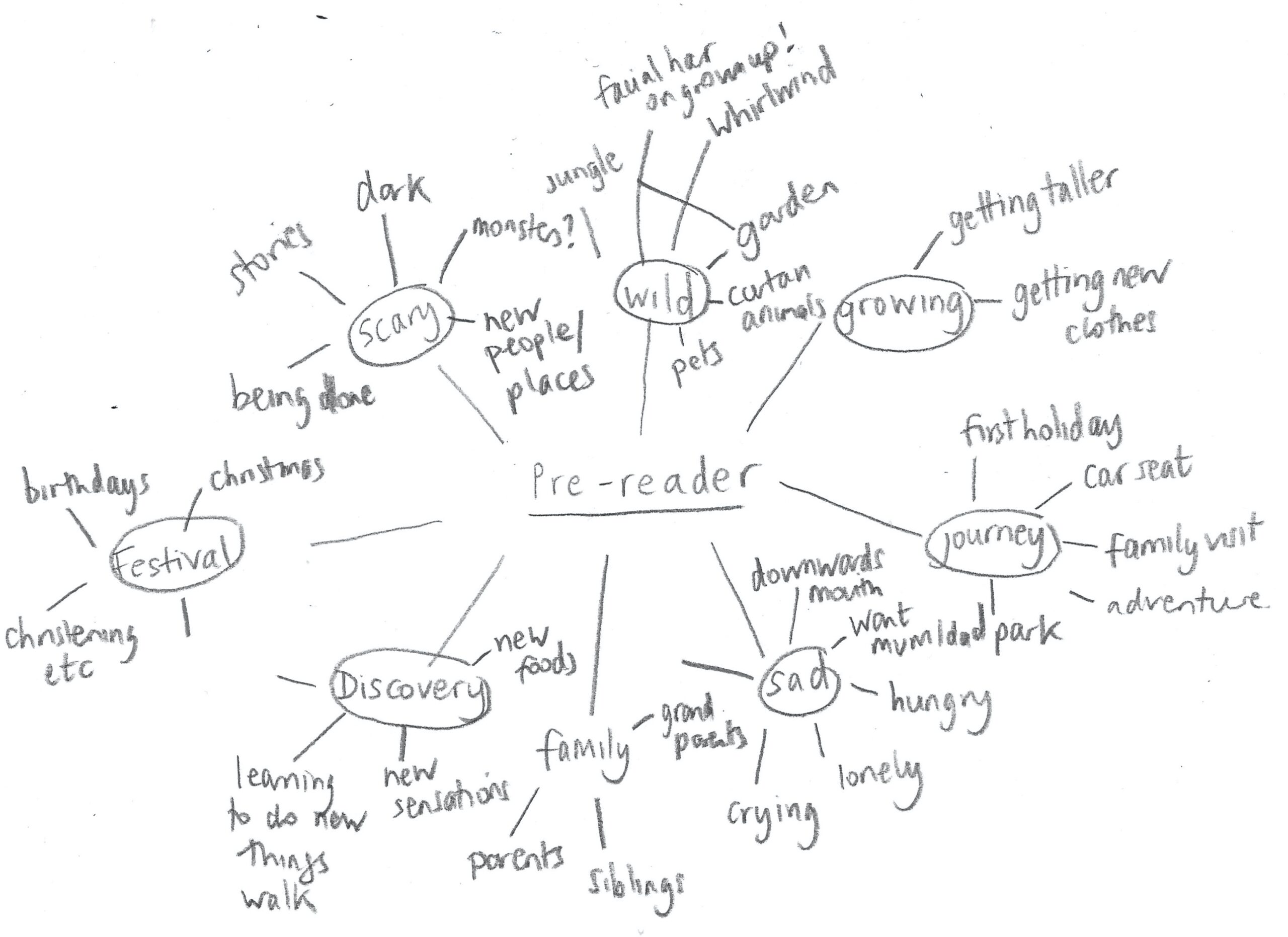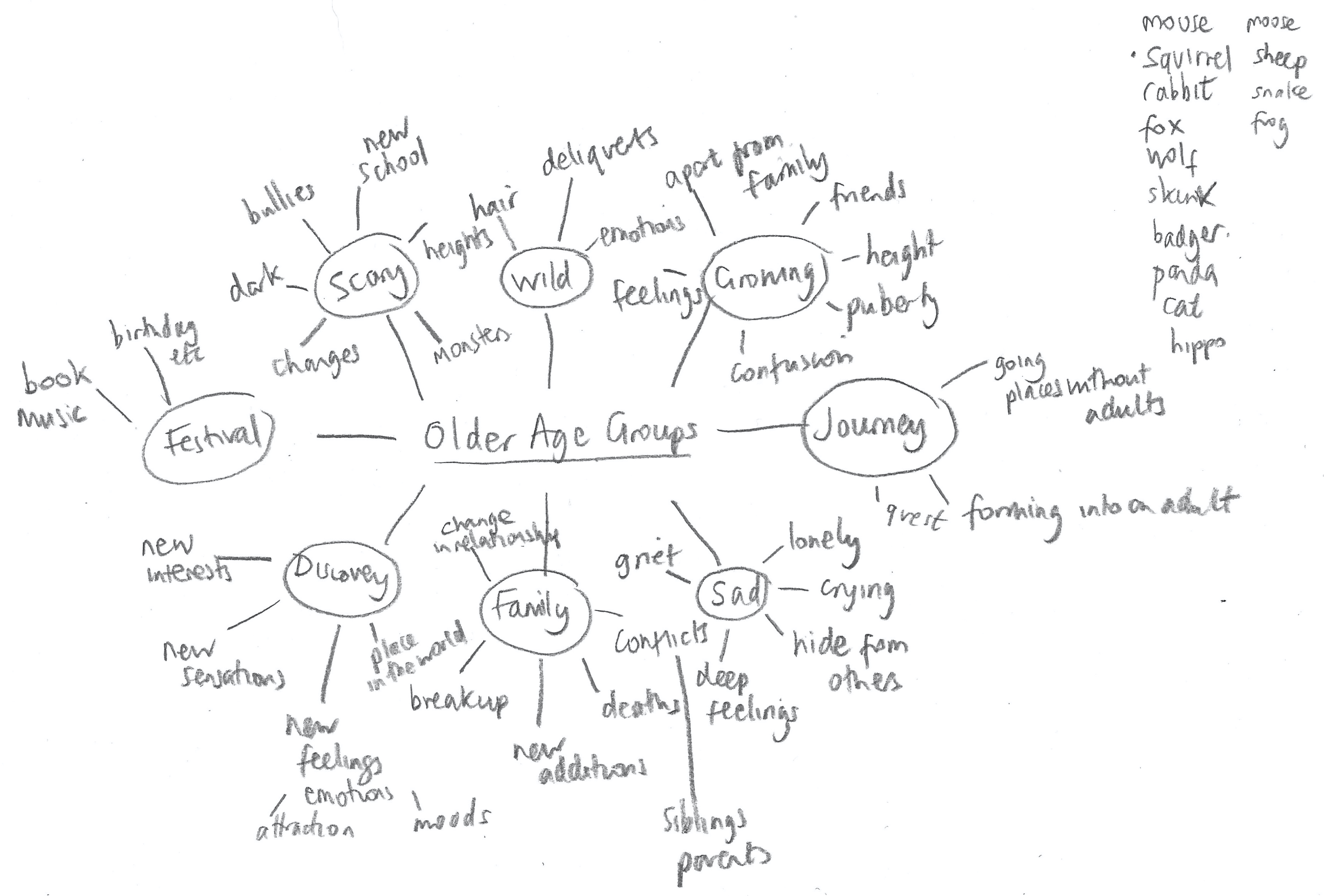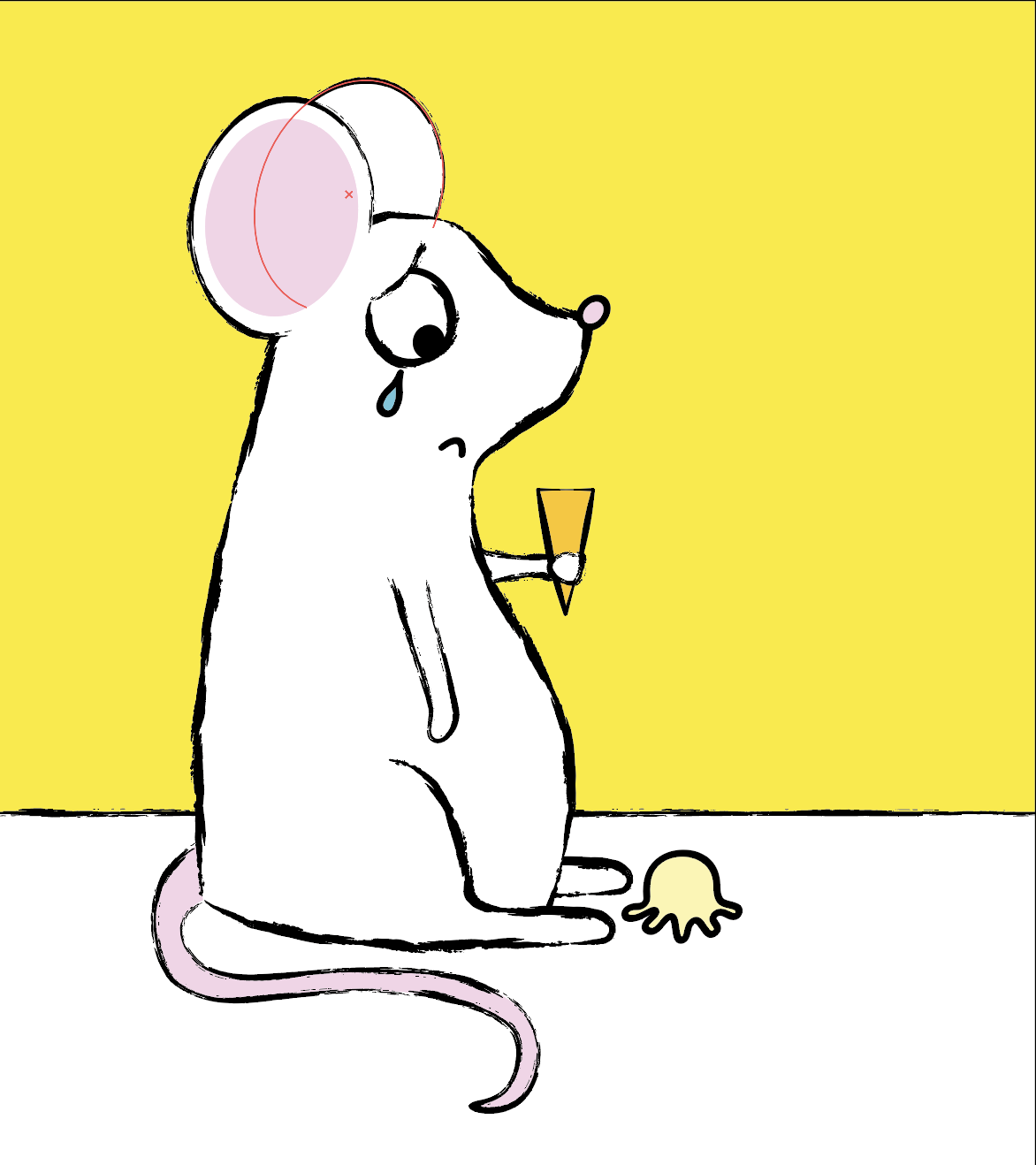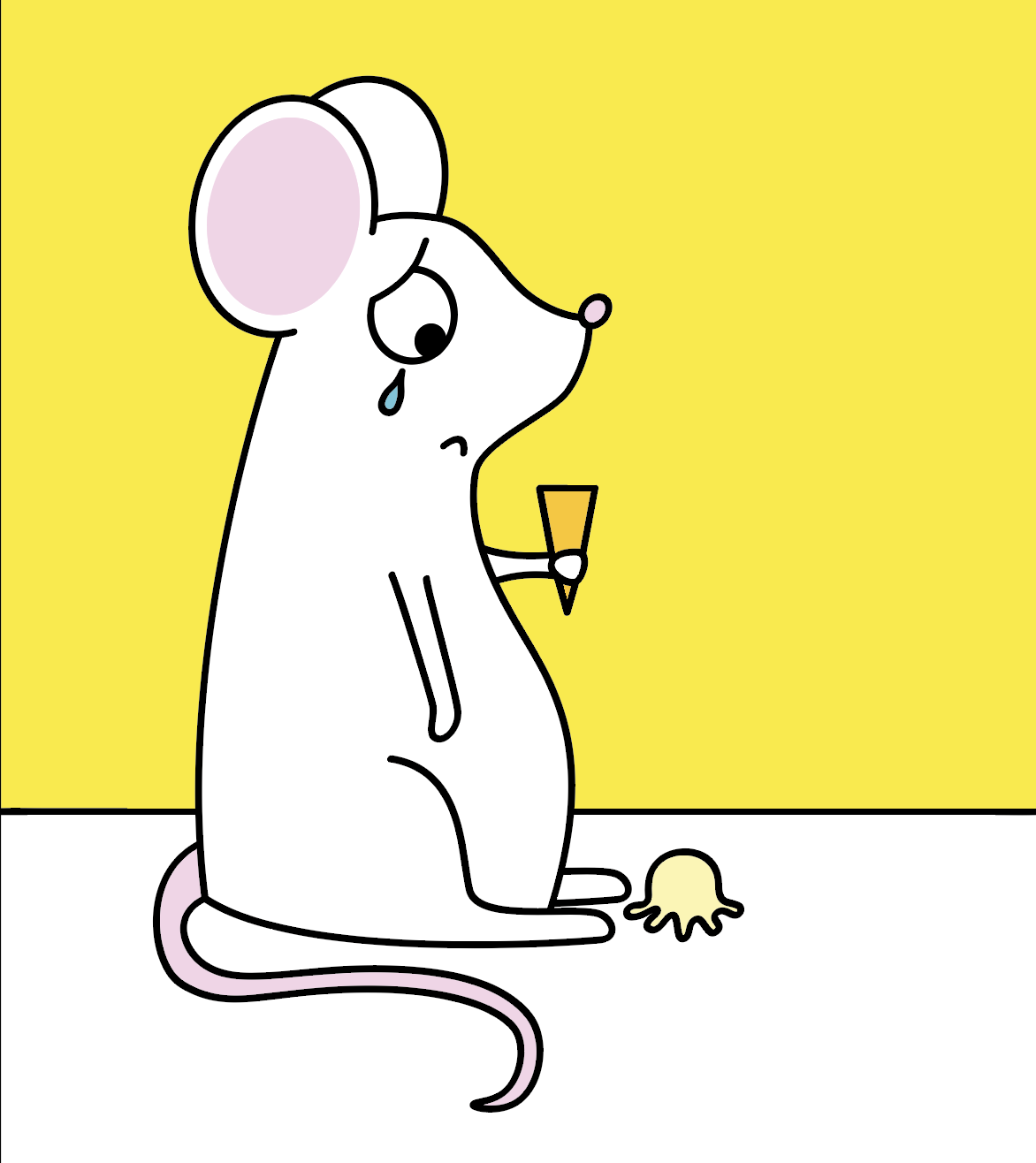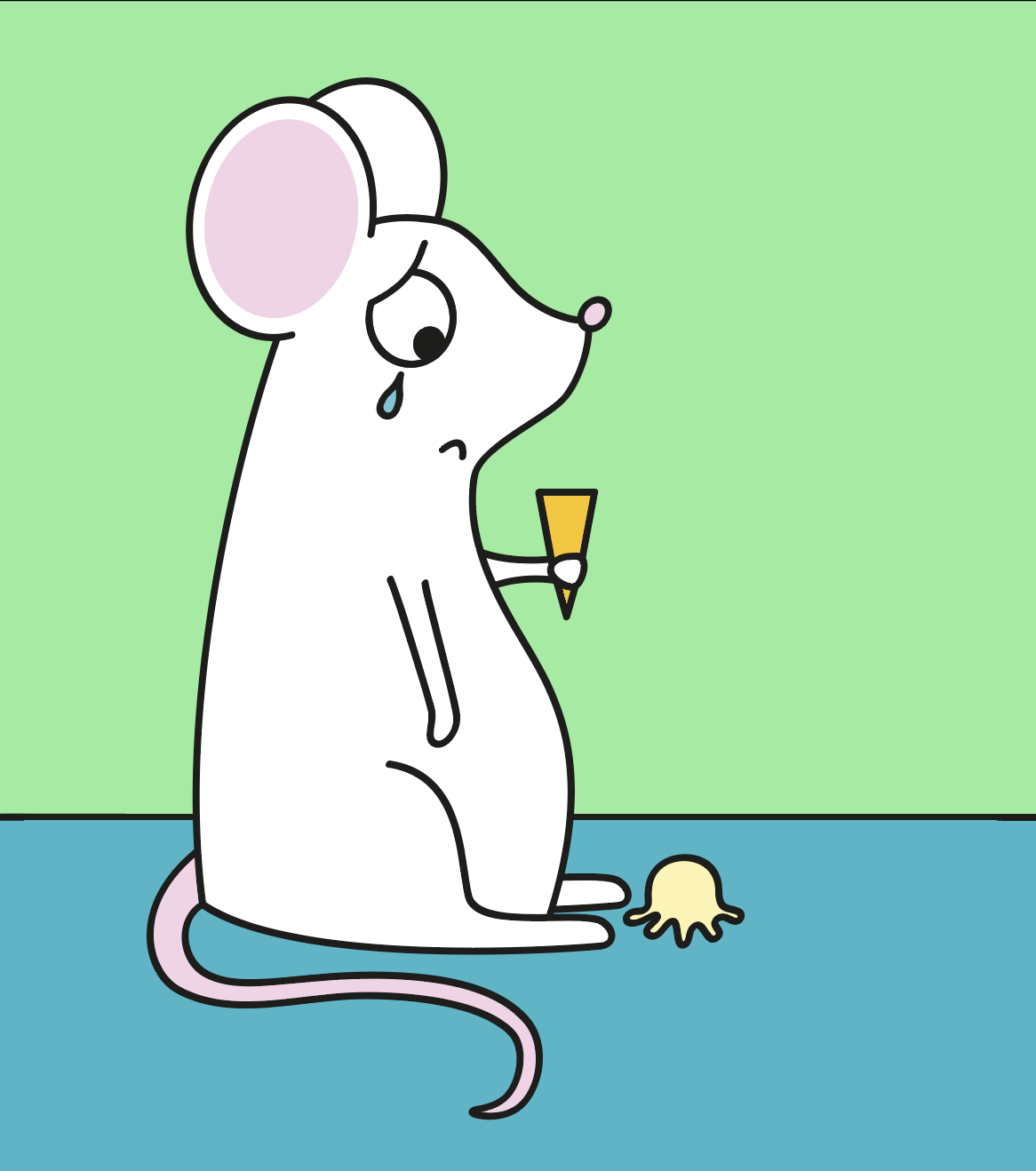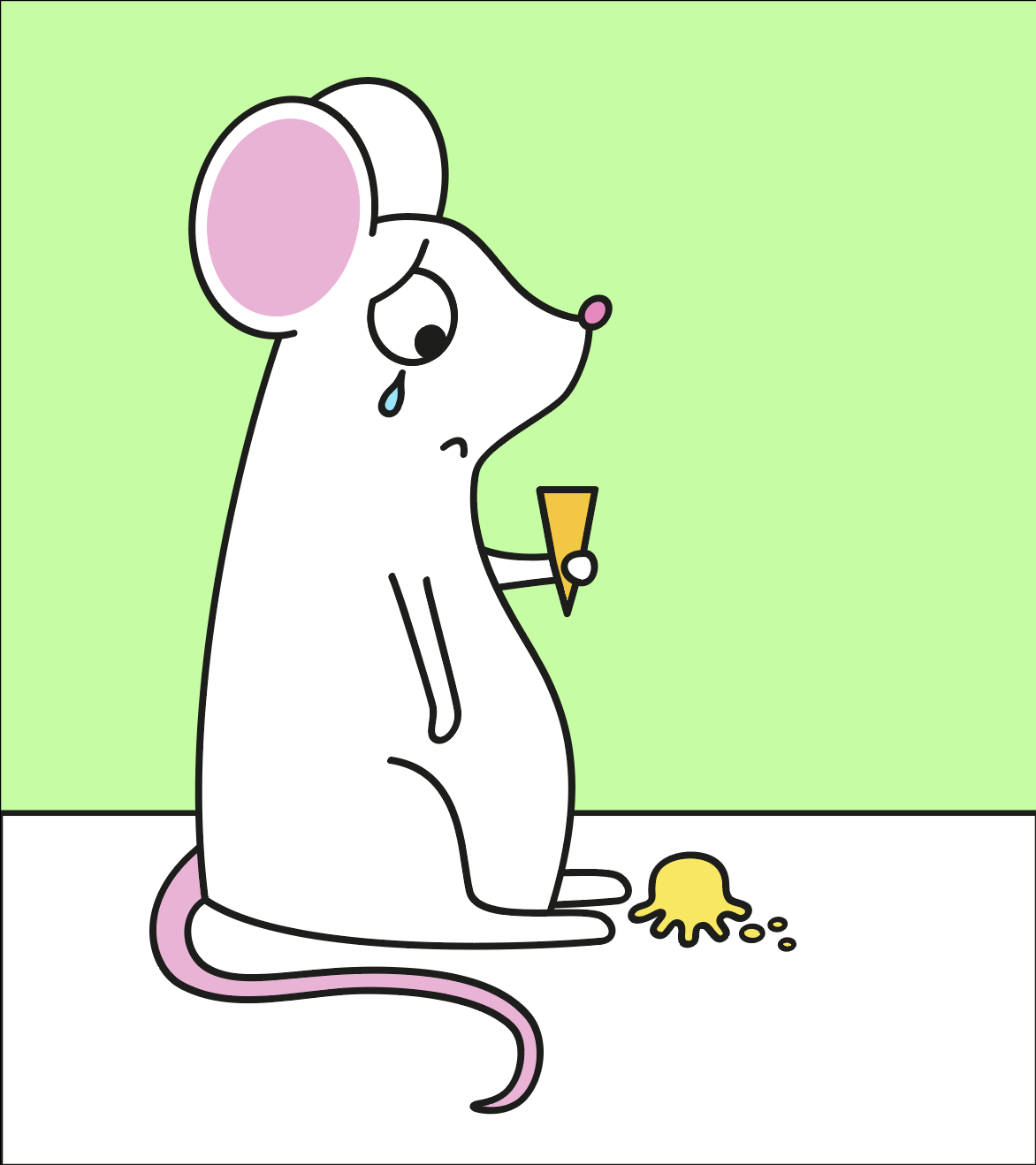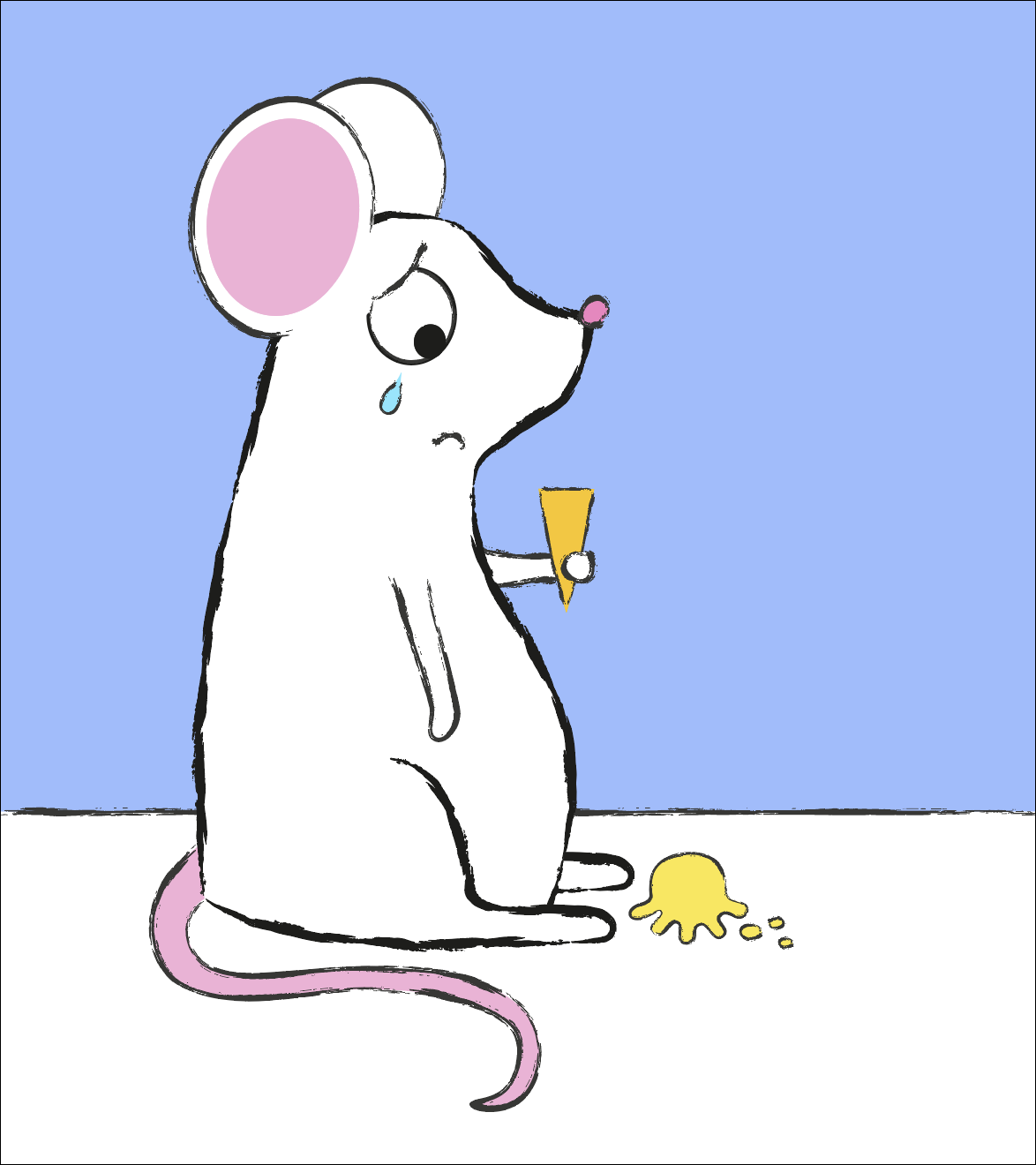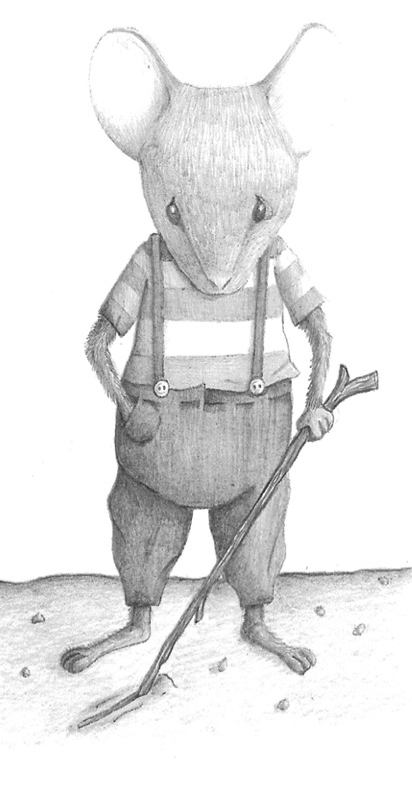Brief
Collect as many examples of imagery for children as possible. Group the illustrations you have collected into the target age groups. Include at least one image for each age group.
- Pre-reader
- Pre-school (3-5)
- Early reader (5-7)
- Established reader (7-9)
- Older age groups
Take two of these age groups and, for each one, go through a process of brainstorming around at least one word chosen from this list:
- Festival
- Scary
- Wild
- Growing
- Journey
- Sad
- Family
- Discovery
Pick an animal appropriate for each age group and brainstorm to identify themes, images and ideas pertinent to your age groups.
Create a simple image of your animal engaged in an activity that communicates this word. Be conscious of the need to achieve stylistic consistency in the development of all the content you include within your imagery. Remember you are creating the world in which your character operates.
Explore the colours and materials to use for your illustration. You are engaging a process of visual communication and you need to be conscious of the nature of your visual language in the same way you would use language when speaking to a child.
Are the target age brackets for children really as clear-cut as we have made them here? How did the function of image and text differ within the different age groupings? What is your response to the idea ‘all children’s illustration has bright colours’?
Research
I began this exercise by re-reading the section on illustrating for children in the book Illustration: A Theoretical & Contextual Perspective (2007) by Alan Male.
I looked into Book Bands, which helped explain the generally expected stages of children’s literacy levels. I then selected two publishers at random: Usborne and Penguin and using the search facilities, viewed the covers of books aimed at the different age groups. As I went through these, I selected examples that stood out to me and noted down some of my impressions of each category:
Pre-reader
Examples: Stanley Series, That’s not my…, Baby Touch
- Large faces – dots for eyes. Simple features/expressions.
- Limited number of characters used.
- Bold outlines.
- Flat designs.
- Saturated colours.
- Incorporate touch elements.
- Easily recognisable characters/actions.
- Often looking directly at the audience.
- Children in this age group are solely depending on the illustration to communicate to them (even though an adult would be reading any accompanying text) – so the image has to clearly represent its intended meaning.
Pre-school (3-5)
Examples: Peep Inside…, Wise Before Five, Big Ideas for Little Philosophers, Little First Stickers
- Similar to pre-school, but not such simple illustrative designs.
- More going on in compositions – interaction between several characters.
- Titles are often questions.
- More colours used.
- Educational element.
- Children begin linking words to the images.
Early reader (5-7)
Examples: The Ladybird Big Book of Slimy Things, Daisy Series, The Dinosaur Who Stayed Indoors, Mad about Pirates
- Noticeably more complex/realistic illustrations.
- More expressive character.
- More text incorporated into designs.
- Children generally stop relying solely on illustrations to tell the story at this point.
Established reader (7-9)
Examples: Dancing the Charleston, Extraordinary Life, Harklights, Forgotten Fairy Tales of Kindness and Courage
- Greater range of colour palette and tones used.
- More realistic illustrations (even if stylised).
- Greater use of depth.
- More complex situations/narratives depicted.
- Composition often more ‘organised’.
- Illustrations become independent from the text.
Older age groups
Examples: Tortured Wood, Who Killed Darius Drake?, The Lost War Dog, Camp Jupiter Classified, Greenwitch
- Limited use of illustration within books, so focus is on cover.
- Typography/limited use of illustration.
- Greater use of atmospheric style.
- Use of more muted/limited colours – to reflect mood of book/title.
- Greater range of illustrative styles (e.g. realistic, abstract, highly stylised).
- More ‘serious/grown-up’ in appearance.
I then looked at some other sources of imagery aimed at children including CBeebies, which is aimed at children under 7 (examples of animations include: Love Monster, Hey Duggee and Sarah and Duck) and CBBC, which is aimed at children aged 8 and over (there was noticeably less animations on offer for this age range, examples include: Boy Girl Dog Cat Mouse Cheese, She-Ra and the Princesses of Power and The Pets Factor).
I also researched t-shirts aimed at different age groups and found similar trends in terms of illustration as described above.
I personally preferred all the illustrations/animations aimed at the much younger age groups. I liked the simplified, bold styles and spacious compositions. I recalled that when I was a child, I was always put off reading a book that had a realistic (photographic) style illustration of the character on the cover as I would rather have used my own imagination.
Chosen Age Groups
After absorbing what I had learned so far, I decided to select age groups from opposite ends of the scale: Pre-reader and Older age groups, as I thought it would be interesting to compare these two extremes.
I then mind-mapped each word for the two age groups, which I found quite challenging.
Selection of Animals
I was unclear how an animal could be described as ‘inappropriate’ for a particular age, believing that it rather depended on how the animal was presented, I decided it would to select one animal and attempt to depict this choice appropriately for both age groups. I decided to do some research in this area and I selected the polar bear as a case study.
An example of a book aimed at pre-readers (3+ months stated on website) that depicts a polar bear is That’s not my polar bear… by Fiona Trott.
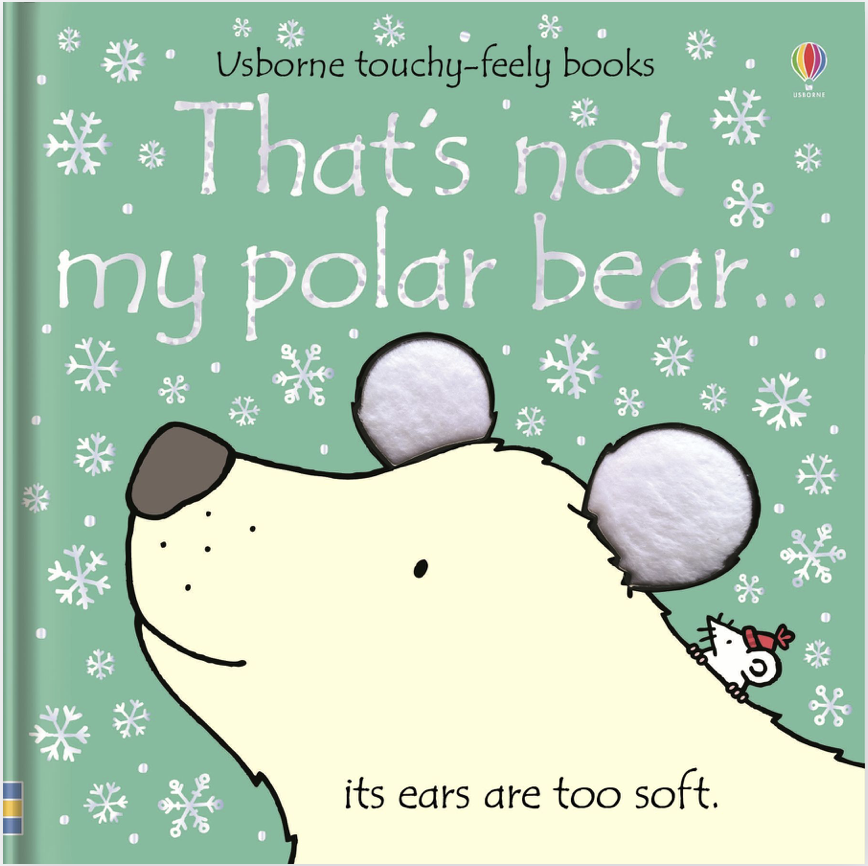
Source: Usborne
I compared this with the depiction of a polar bear on an edition of Northern Lights by Philip Pullman, a book aimed at older age groups.
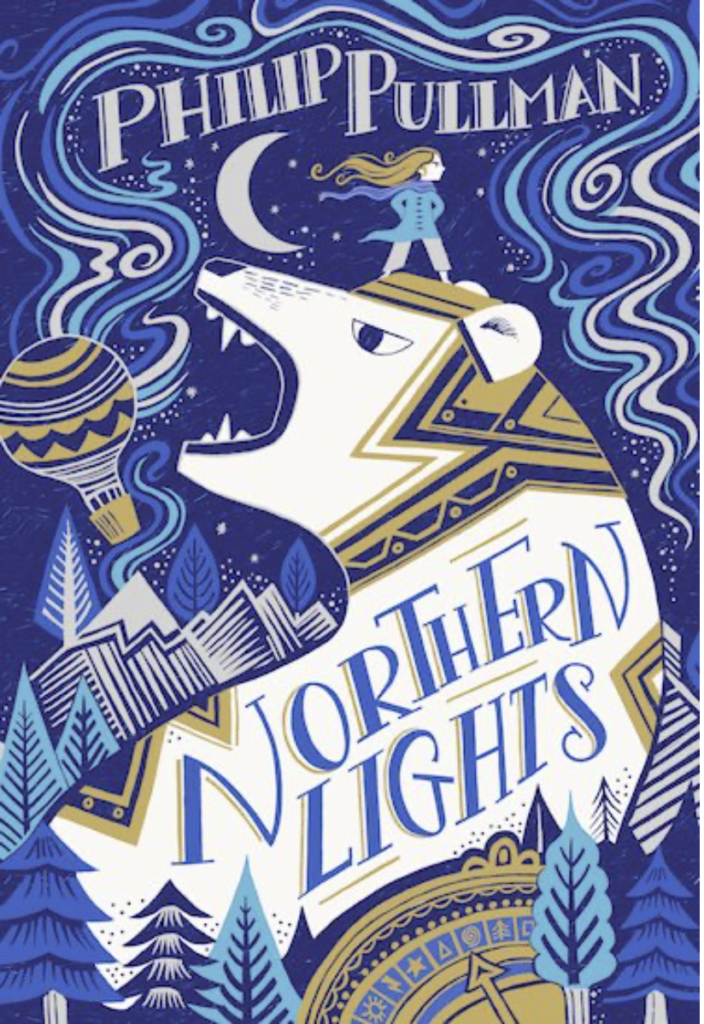
Source: Scholastic
I felt these choices demonstrated how it is possible to create a representation of the same subject in completely opposite ways in terms of style, complexity, mood, message and a character’s demeanour.
The animal I chose for this exercise was a mouse.
I created a Pinterest board with some examples of illustrations of mice aimed mainly at children. I summarised some key points from all my research of what I felt were pertinent to keep in mind for each age group:
Pre-reader
- Simple style
- Clear
- Limited colours – bright/saturated
- White space
- Recognisable obvious action/expression
- Flat
Older age groups
- More complex
- Subtle/under
- Greater range of colour/tones
- Wider range of themes
- Can be highly stylised/realistic/abstract
- Depth
I also selected the word sad as my choice to illustrate.
Pre-reader Illustration
I sketched out my idea for the pre-reader age group and scanned this into Illustrator. I hoped to be inspired by the style of the Stanley Series, as I liked the boldness and simplicity. The concept was for my illustration was very simple: the ice-cream has fallen out of the cone and the mouse is sad about it.
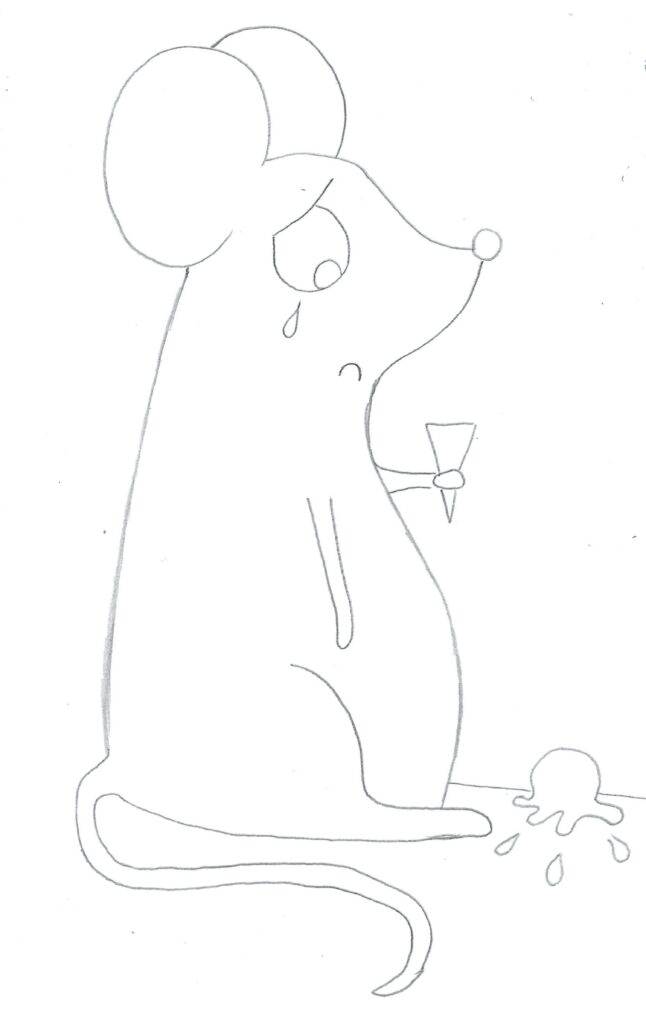
In Illustrator, I created the outline and then tried various colour schemes. I also experimented with the line style. It was much harder than I expected to come up with something I felt looked ‘right’ for such a simple image.
I decided to use blue as the background colour, as it is often associated with sadness.
I also experimented with the line style as can be seen below, but I felt this perhaps distracted from the message.
I tried to communicate the word ‘sad’ as clearly as possible in this illustration. The reason that the mouse is sad is obvious and the reaction can clearly be seen on his face. It does not require words or much thought to understand the message.
Older Age Group Illustration
I found it much more challenging to think of an idea appropriate for the older age group. In the end, I made a conscious decision to stay away from my computer as I need to improve my drawing skills. I sketched out an idea, which had begun to form in my head.
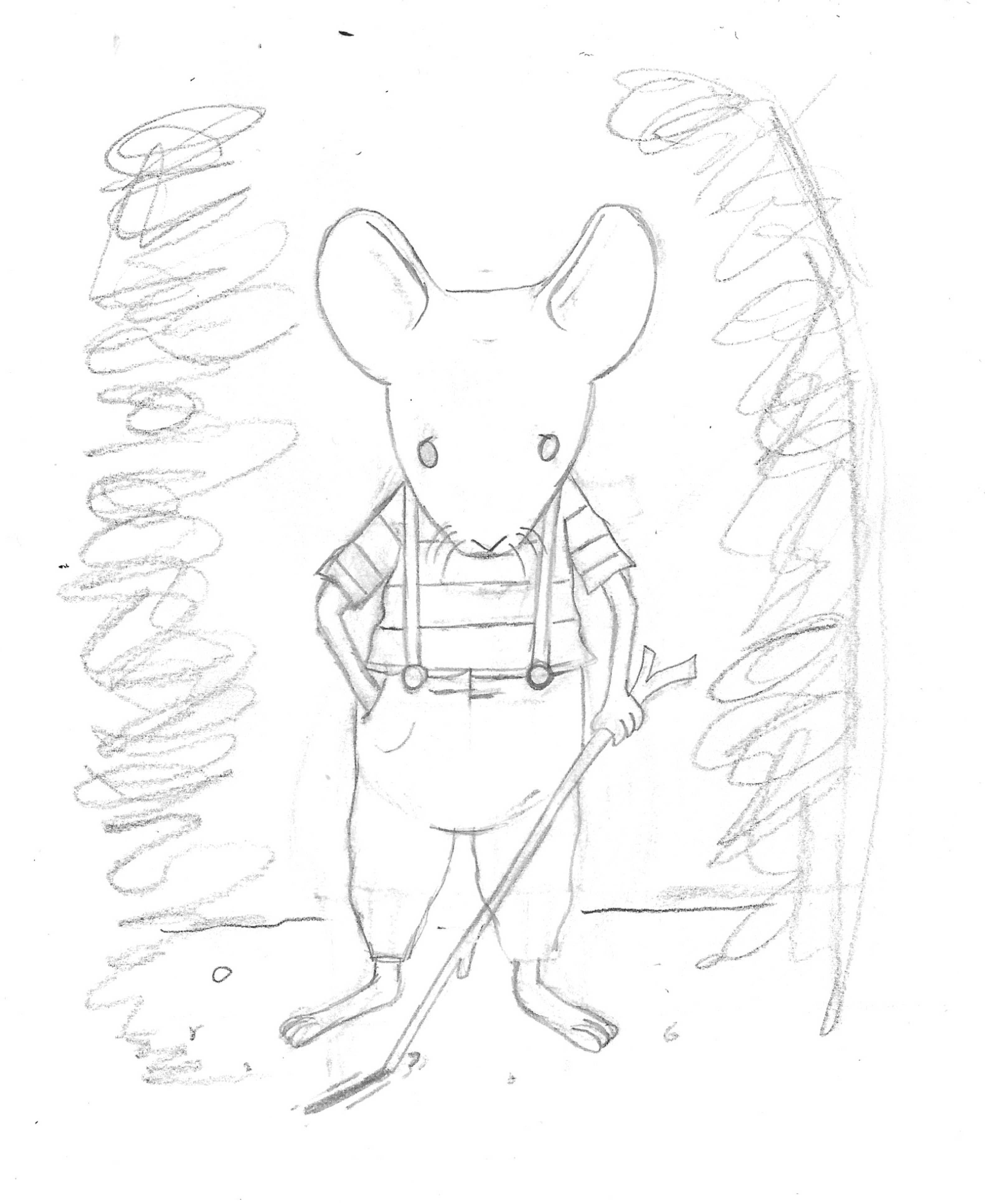
I then used my light-box to make a cleaner line version.
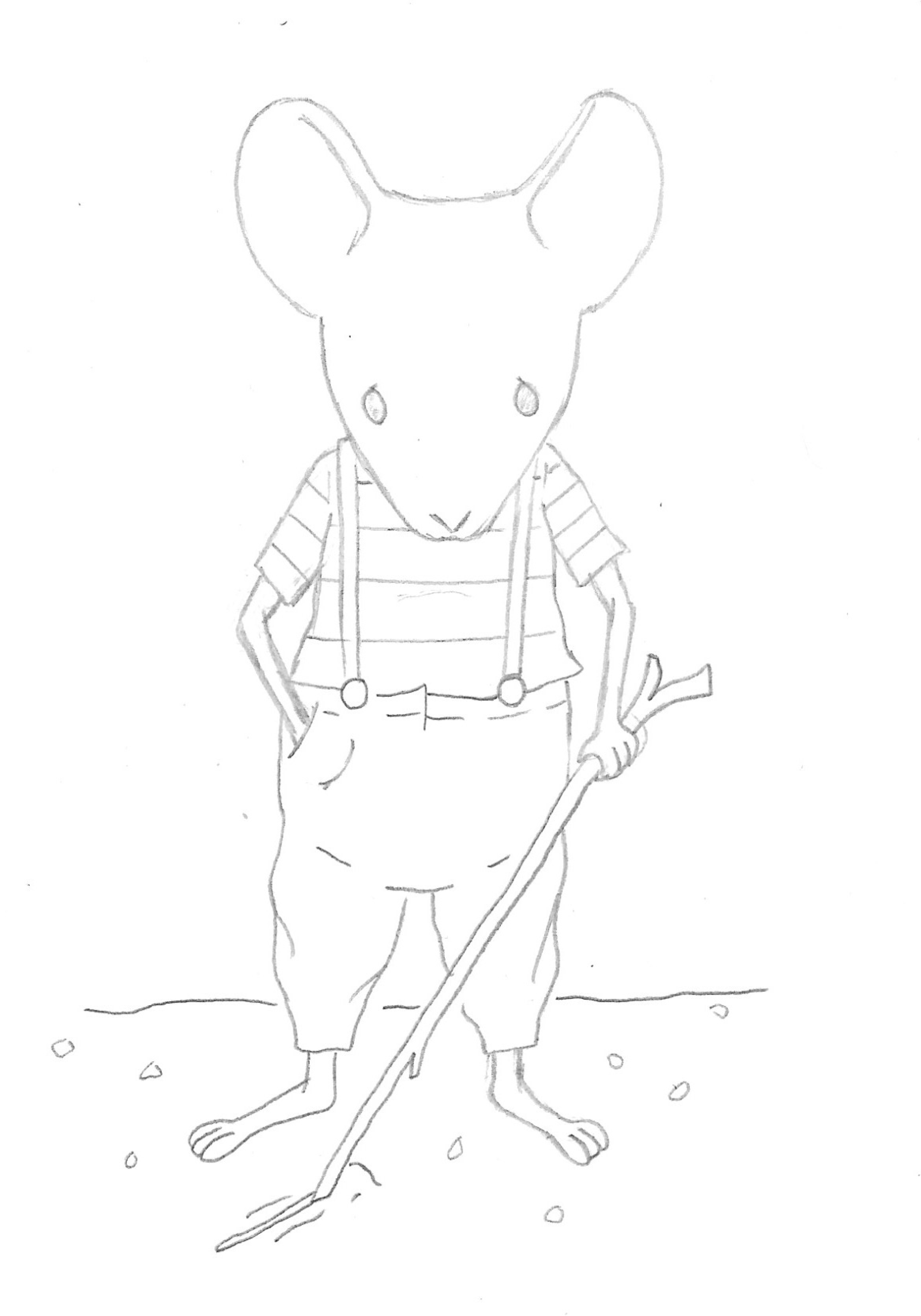
Next, I contemplated what to do in terms of colour. I attempted to use coloured pencils, but was not at all happy with the result. Admittedly, I did not approach it with much confidence or commit enough time to build on it.
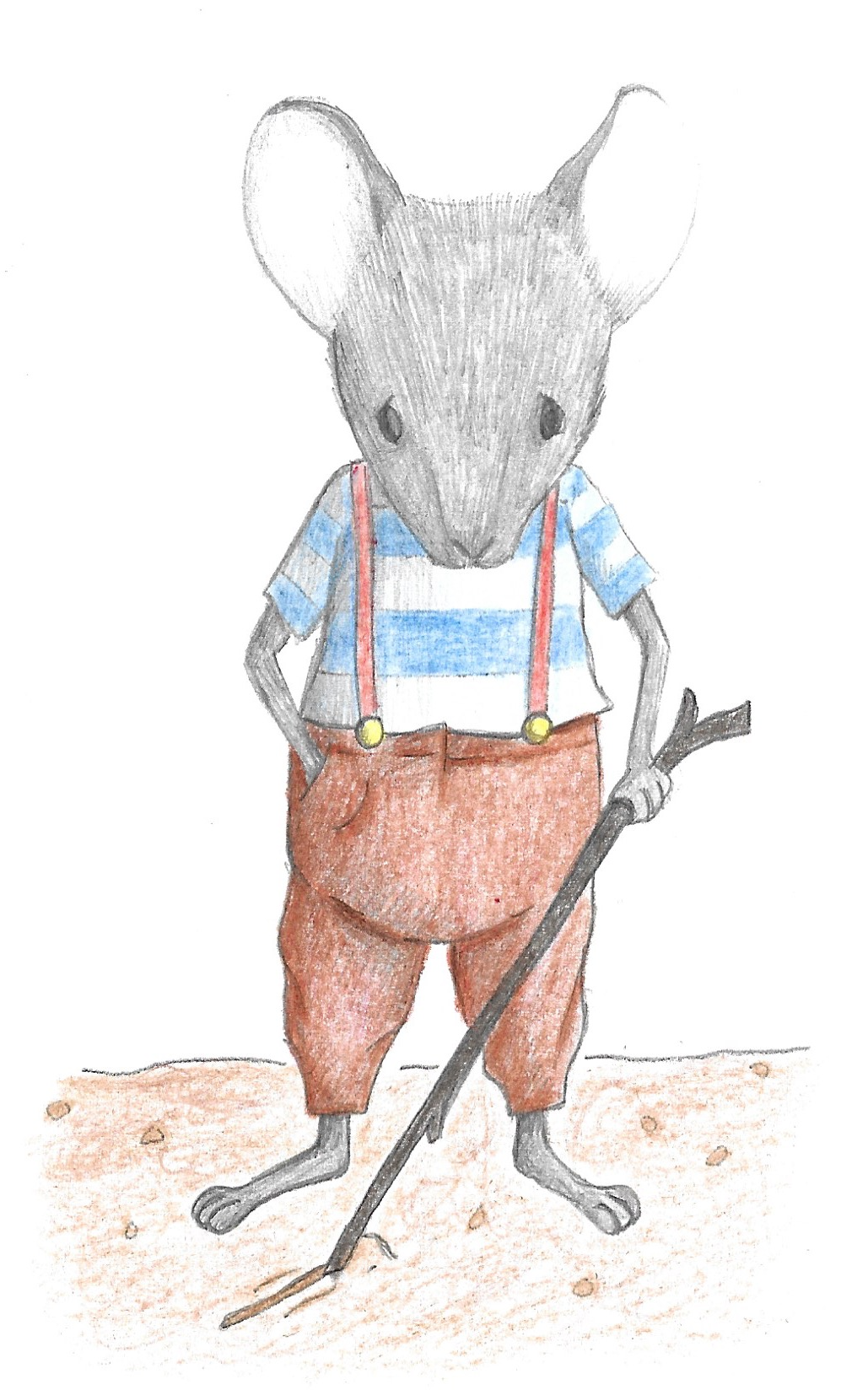
I really need to improve my skills in terms of tone. When I scanned the above image in greyscale, it is clear that there is little differentiation between light and dark areas, which makes it a weak.
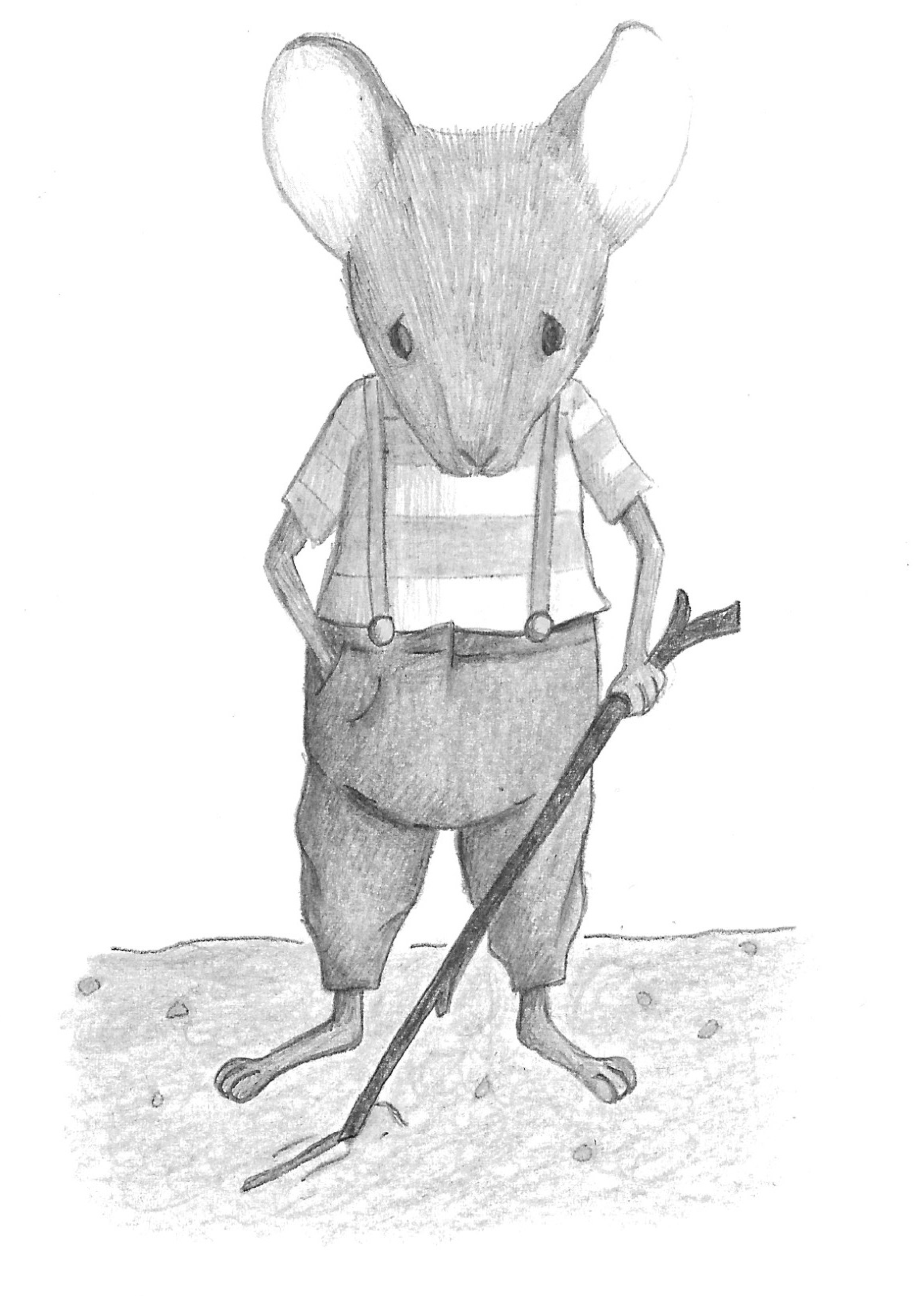
I therefore made the decision to really focus on the quality of tone for this illustration. I did a new version just using a 3B pencil and the result can be seen below (the scanner made it lighter).
I felt this was a marked improvement on my previous attempts, however, I still was not 100% happy with this illustration. There should have been even stronger contrast in tone and the feet were unequal in size. I also was not satisfied with the mud.
In terms of conveying the message of ‘sad’, I felt this was achieved and had the subtlety I was hoping for. It is not obvious why the mouse is sad, but his body language suggests he is pensive. I also decided that colour was not necessary for this illustration and the use of just pencil added to the mood. I also thought that it would be more suited to children aged 9-12 rather than teenagers.
Final Illustrations
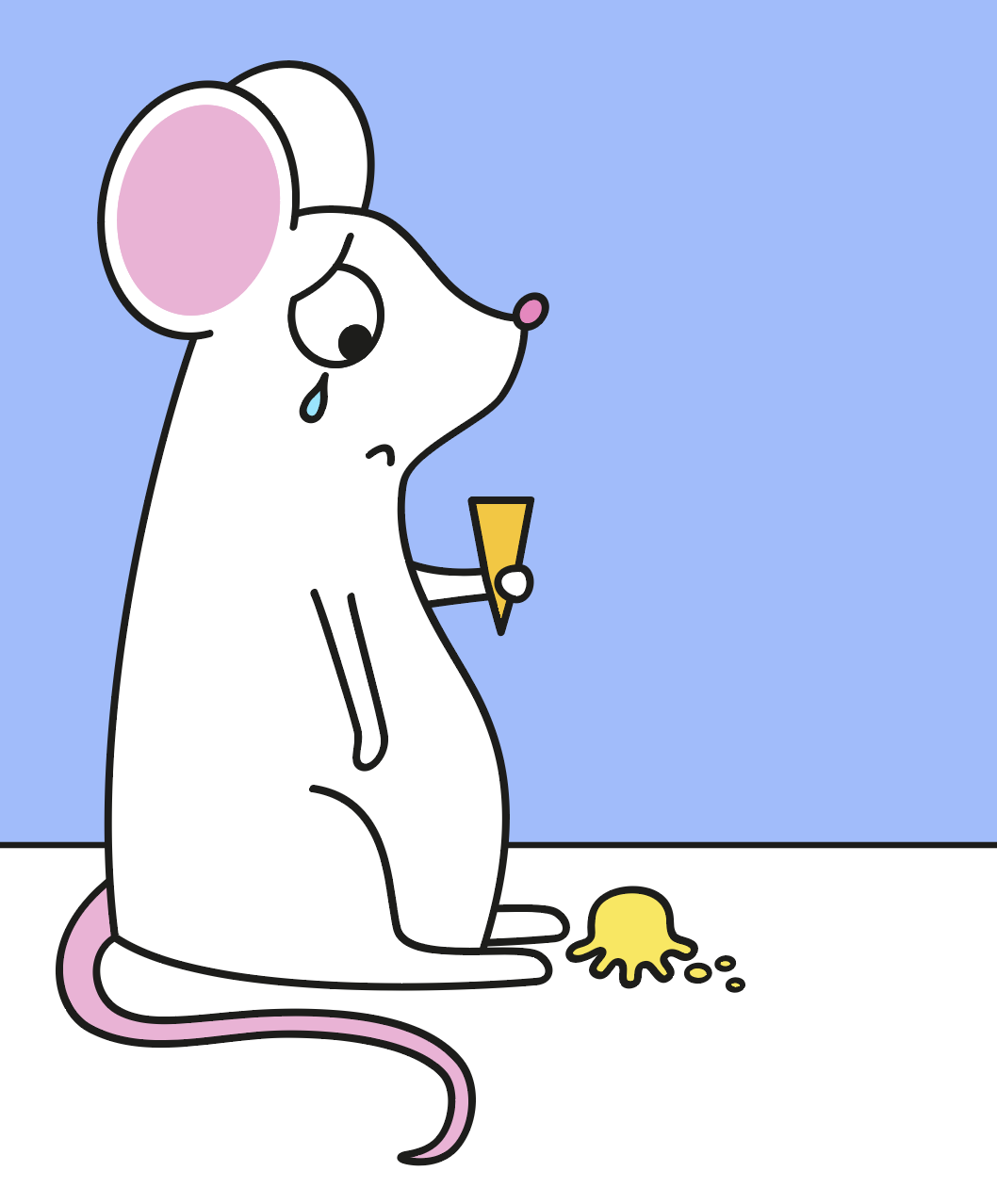
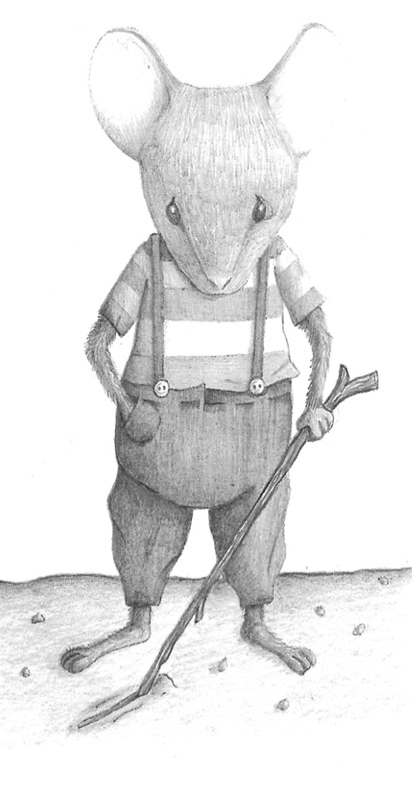
Final Thoughts
From the research carried out for this exercise, I did not feel that the target age groups are as clear cut as suggested in the brief. Particularly with the younger age groups, after pre-reader, it was difficult to pinpoint many differences between these. I felt that as the intended age increased the illustrations became less descriptive of the text. Although the pre-reader age examples, generally, seemed to employ bright, saturated colours, this was not the case for the others, particularly for the older age groups.
I enjoyed the research for this exercise and learnt a great deal. Although I was not completely satisfied with my final illustrations (I realised afterwards that I had forgotten to add the tail in the second illustration), I did feel that they met the requirements and made me aware of some of my weaknesses, which I intend to work on.
References
BBC, (n.d.). CBeebies. [online] Available at: https://www.bbc.co.uk/tv/cbeebies [Accessed 14 March 2021].
Castrillon, M. (n.d.). Melissa Castrillon. [online] Available at: https://www.melissacastrillon.co.uk/ [Accessed 15 March 2021].
Male, A. (2007) ‘The Role of Illustration: Documentation, Reference and Instruction’ in Illustration: A Theoretical & Contextual Perspective. London: Thames & Hudson, pp. 144-157.
Penguin, (n.d.). Children’s Books. [online] Available at: https://www.penguin.co.uk/genres/children.html [Accessed 14 March 2021].
Reading Chest, (n.d.). What are book bands? [online] Available at: https://www.readingchest.co.uk/book-bands#a [Accessed 14 March 2021].
Scholastic, (n.d.). His Dark Materials #1: Northern Lights (Gift Edition). [online] Available at: https://shop.scholastic.co.uk/products/129321 [Accessed 15 March 2021].
Usborne, (n.d.). Browse by Age – Books. [online] Available at: https://usborne.com/gb/books/browse-by-age [Accessed 14 March 2021].
Usborne, (n.d.). That’s not my polar bear…. [online] Available at: https://usborne.com/gb/that-s-not-my-polar-bear-9781409504450# [Accessed 14 March 2021].
